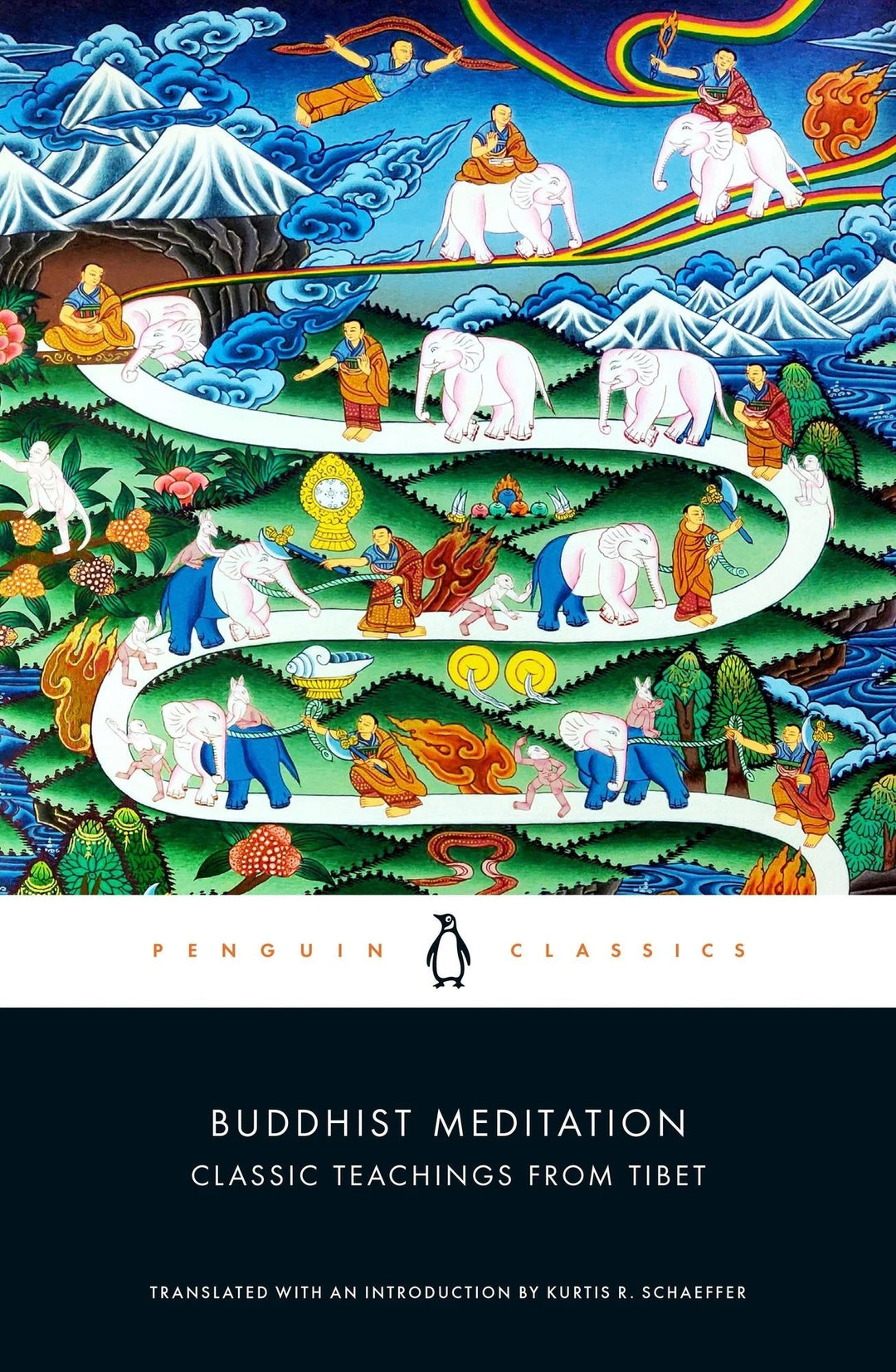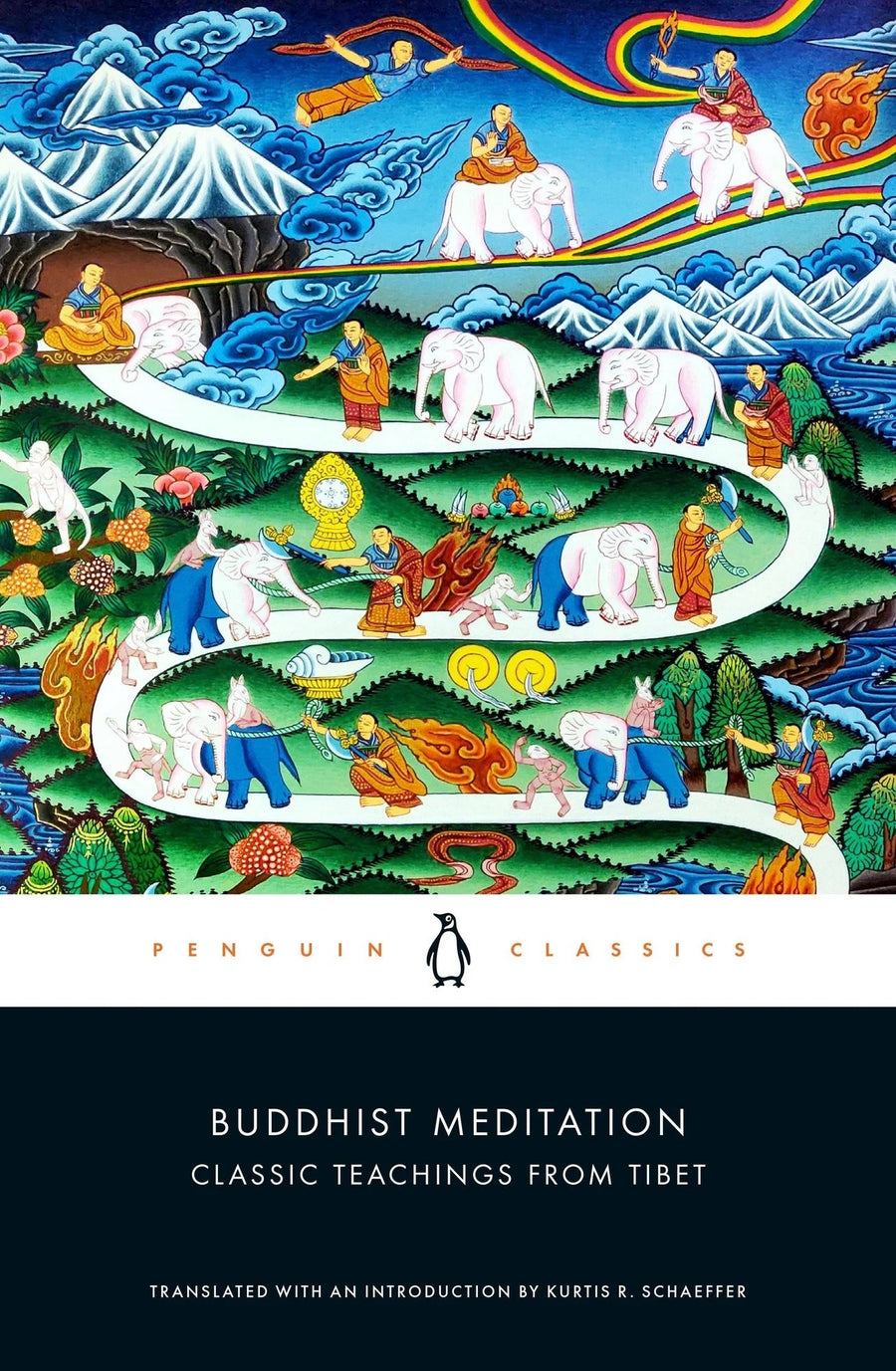
Schaeffer, K: Buddhist Meditation
Classic Teachings from Tibet
A Tibetan Buddhist anthology of accessible and authentic contemplative exercises to help cultivate innate yet undeveloped powers of mind, emotion, and body. A Penguin Classic Drawn from Tibet's rich contemplative literature, Buddhist Meditation offers classic exercises focused on the opportunities and challenges of life; cultivating inner calm; fostering a wider perspective on oneself in relationship to others; working with negative emotions, and the highest values of the Buddhist tradition, love and compassion. Several dozen meditation instructions are collected in twelve chapters. All major traditions of Tibetan Buddhism are represented. The book is structured on foundation practices, practice manuals that immerse the reader in the search for meaningful and compassionate responses to the ubiquity of human suffering, and in the contemplative techniques that translate that search into consequential action. Spiritual exercises introduce: 1) the opportunity for self-betterment and to be of benefit to other living beings: 2) the inescapable persistence of suffering in life, and the reality of death: 3) the workings of ethical cause and effect, otherwise known as karma and: 4) the ever-repeating succession of frustration known as cyclic existence, or samsara. The second set of foundation practices provide tools to build upon including: 5) taking refuge in Buddhism-a deep formal commitment to integrate Buddhist contemplative and ethical teachings into one's life: 6) cultivating love and compassion for all living beings: 7) clearing away cognitive, emotional, and behavioral impediments to actualizing love and compassion: 8) developing with wisdom and the experience and excellent qualities necessary to put love and compassion into practice and 9) dedicating oneself to a spiritual mentor to serve as a guide through this intensive program of training. Part existential philosophy, part ethics, part self-help program, part cosmology-the foundation exercises present a complete Buddhist picture of life, the ethical universe, and the first steps in making a positive impact in life for ourselves and others, steps anyone can begin to take by dedicating themselves to train in contemplative exercises.
Bracelets, bracelets, bracelets, bracelets, chains
| age | Wrist circumference |
|
Newborn |
9 - 12 cm |
|
6 months - 3 years |
12 - 14 cm |
|
4 - 10 years |
14 - 15 cm |
|
Teenager, ladies (XS) |
15 - 16 cm |
|
Ladies (M) |
16 - 17 cm |
|
Ladies (XL) |
18 - 19 cm |
|
Men (M) |
18 - 20 cm |
|
Men (XL) |
21 - 22 cm |
The length of the bracelet may be 1 cm to 3 cm longer than the measured wrist circumference, depending on your taste.
Finger rings
| Ring size | Inner diameter | Inner circumference |
|
48 |
15,3 mm |
48 mm |
|
50 |
15.9 mm |
50 mm |
|
52 |
16.6 mm |
52 mm |
|
54 |
17.2 mm |
54 mm |
|
56 |
17.8 mm |
56 mm |
|
58 |
18.5 mm |
58 mm |
|
60 |
19.1 mm |
60 mm |
|
62 |
19.7 mm |
62 mm |
|
64 |
20.4 mm |
64 mm |
|
66 |
21.0 mm |
66 mm |
- Take a ring that fits well.
- Place it on a ruler and measure the inner diameter (from one inner edge to the other).
- Compare the diameter with the table to determine the ring size.
- Take a thin strip of paper or thread.
- Wrap it around the part of the finger where you want the ring to sit (not too tight).
- Mark the point where the ends meet.
- Measure the length of the strip in millimeters. This is the inner circumference.
- Find the right size in the table.
- Measure the finger size in the evening, as fingers swell slightly during the day.
- If you are between two sizes, choose the larger size.
- Make sure that the ring fits over the knuckle.


